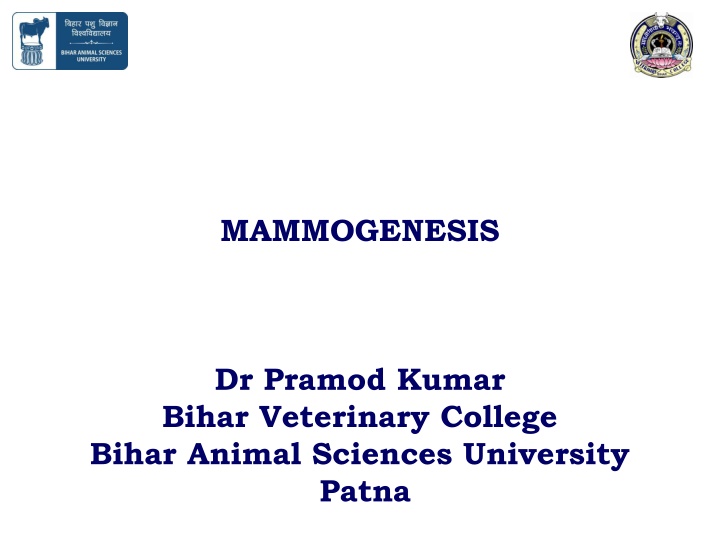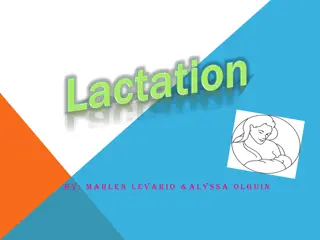
Mammary Gland Development and Hormonal Regulation
Learn about mammary gland development and the intricate role of hormones such as estrogen, progesterone, and cortisol. Explore how these hormones affect mammary tissue growth and function, crucial for lactation and reproductive processes in animals.
Download Presentation

Please find below an Image/Link to download the presentation.
The content on the website is provided AS IS for your information and personal use only. It may not be sold, licensed, or shared on other websites without obtaining consent from the author. If you encounter any issues during the download, it is possible that the publisher has removed the file from their server.
You are allowed to download the files provided on this website for personal or commercial use, subject to the condition that they are used lawfully. All files are the property of their respective owners.
The content on the website is provided AS IS for your information and personal use only. It may not be sold, licensed, or shared on other websites without obtaining consent from the author.
E N D
Presentation Transcript
MAMMOGENESIS Dr Pramod Kumar Bihar Veterinary College Bihar Animal Sciences University Patna
Estrogen mammary ducts, and progesterone and estrogen stimulate secretory tissues. Sensitivity of individual cells to progestational inhibition may decrease variably interdependent upon relative increases in estrogen, prolactin, corticoids, and growth hormone to cause asynchronies among them at calving. stimulates development of proliferation of which may be
Mammary Glands Mammogenesis continues until termination of pregnancy and overlaps till onset of lactation Hyperplasia of the ductal and alveolar tissue Pigmentation of the nipple and the areola
Role of estrogens Causes the ductal system of the quarter to grow and branch. Stroma of the udder increase in quantity and large quantities of fat are laid in the stroma. Growth hormone, adrenal glucocoticoids, prolactin & insulin are also needed for ductal growth.
Circulating estrogens Increases the number of gap junctions between myometrial cells Production of prostaglandins Increase in myometrial contractile proteins Increase in number of oxytocin receptors
Effect of cortisol Increase in cortisol formation in the fetus CRH secretion by the fetal hypothalamus increases cortisol Increased placental production of CRH. This increases circulating ACTH in the fetus
Role of progesterone Acts additional growth of the mammary lobules synergistically with estrogen causes budding of alveoli development of secretory characteristics in alveoli cells
Development of mammary gland Estrogens are primarily responsible for proliferation of mammary ducts Progesterone development of the lobules are primarily responsible for the Prolactin development at puberty is also required for mammary glands Increased prolactin levels, and high levels of estrogens and progesterone (and possibly hCG) cause lobulo- alveolar development during pregnancy Cortisol, insulin and growth hormone are necessary for mammary development
Prolactin Synthesis and Control Produced by the lactotrophs cells of the anterior pituitary gland Under stimulatory control of thyroid releasing hormone Increased release at night In females - increased release during puberty Prolactin levels are high during pregnancy - oestrogen causes an increase in numbers of lactotrophs During lactation, suckling of the quarter results in an increased release of prolactin ( decreased PIH and increased PRH) Response to suckling declines with time post-partum, may well remain above normal for 18 months or more if suckling frequency is maintained at a high level basal levels

